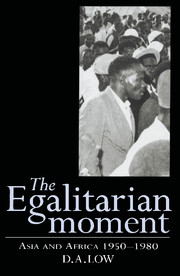Book contents
3 - Rightest regimes and peasant societies: Iran, Southeast Asia
Published online by Cambridge University Press: 12 October 2018
Summary
The government has placed its wager, not on the needy and the drunken, but on the sturdy and the strong
Russian Prime Minister Stolypin 1908My heart is with our village people, and as I think of the future I believe I see a magnificent vista lying ahead
The Shah of Iran 1960MORE than one commentator on Kenya's rural and political regime during the 1960s and later has remarked on its congruence with the purpose of the Stolypin reforms in Russia shortly before the First World War. It cannot be part of the present purpose to elaborate on the oft-told story of changes in the rural scene in Russia during this and the preceding century. The Russian story does, however, provide the principal model for the policies which in one form or another conservative regimes have espoused so as to secure the bases of their support in the countryside, as well as the most extreme example of the policies which have been applied by regimes of the Left there. In each case, moreover, it provides us with the most apt of all comments upon what was entailed here. It is worth therefore a brief glance.
Like so much of central and eastern Europe Czarist Russia used to have an aristocratic large landlord system based upon the serfdom of the peasantry. In country after country between 1771 and 1864 these serfs came to be ‘emancipated’. The Emancipation of the Serfs famously occurred in Russia in 1861. That removed the juridical authority of the nobility over the peasantry and placed control over all village lands in the hands of village communes.
This did nothing, however, to prevent extensive peasant involvement in the Revolution in Russia in 1905. In response to this the Czar appointed in 1906 a former provincial governor named Stolypin as his new Prime Minister. Even before this Stolypin had already adopted the view that if the Czarist regime was to survive it was essential that Russia's rural regime should be substantially reordered so as to secure some quite new support for it in the countryside.
- Type
- Chapter
- Information
- The Egalitarian MomentAsia and Africa, 1950-1980, pp. 63 - 92Publisher: Cambridge University PressPrint publication year: 1995

